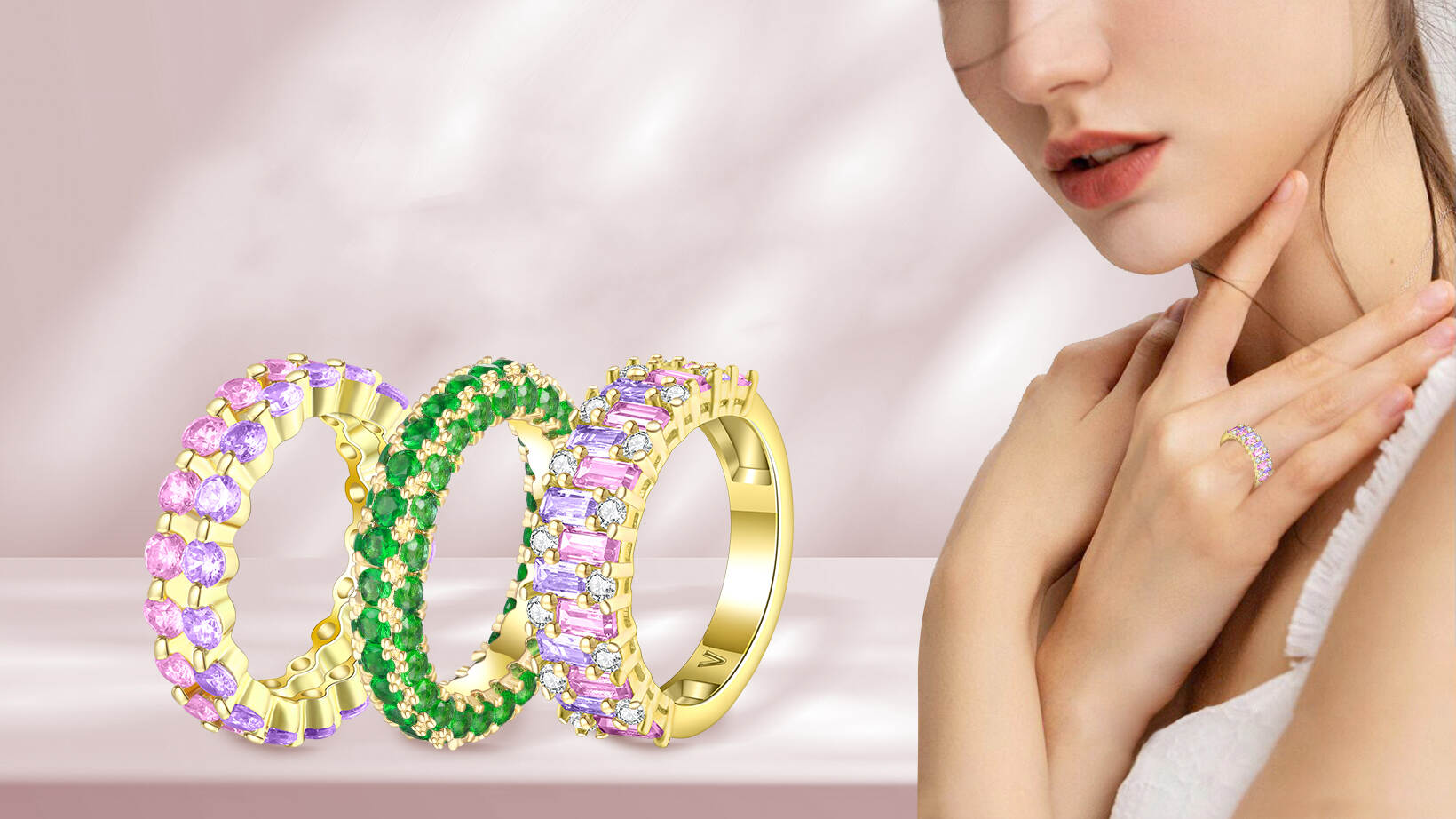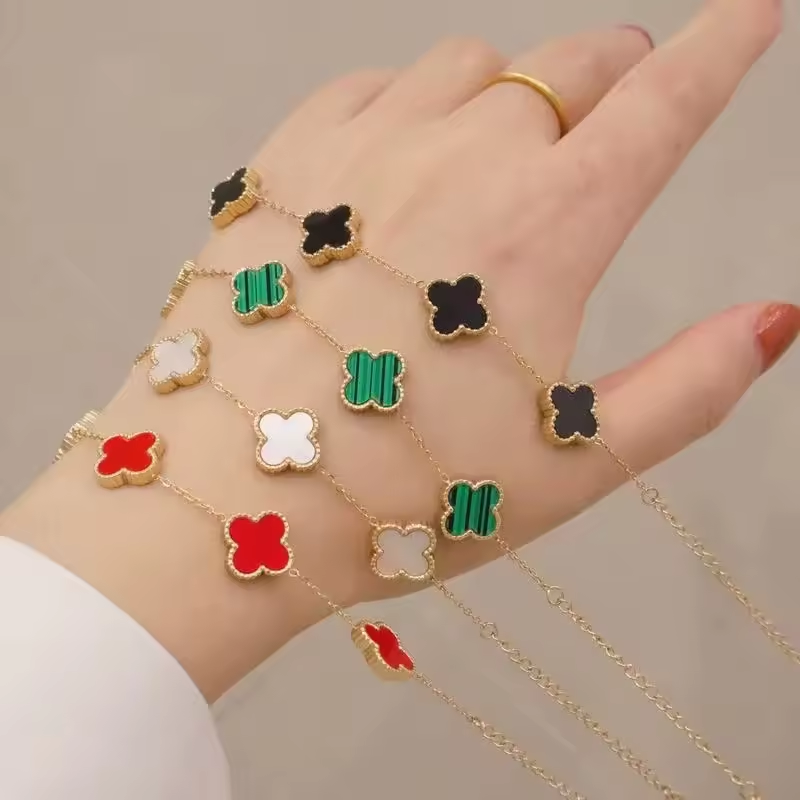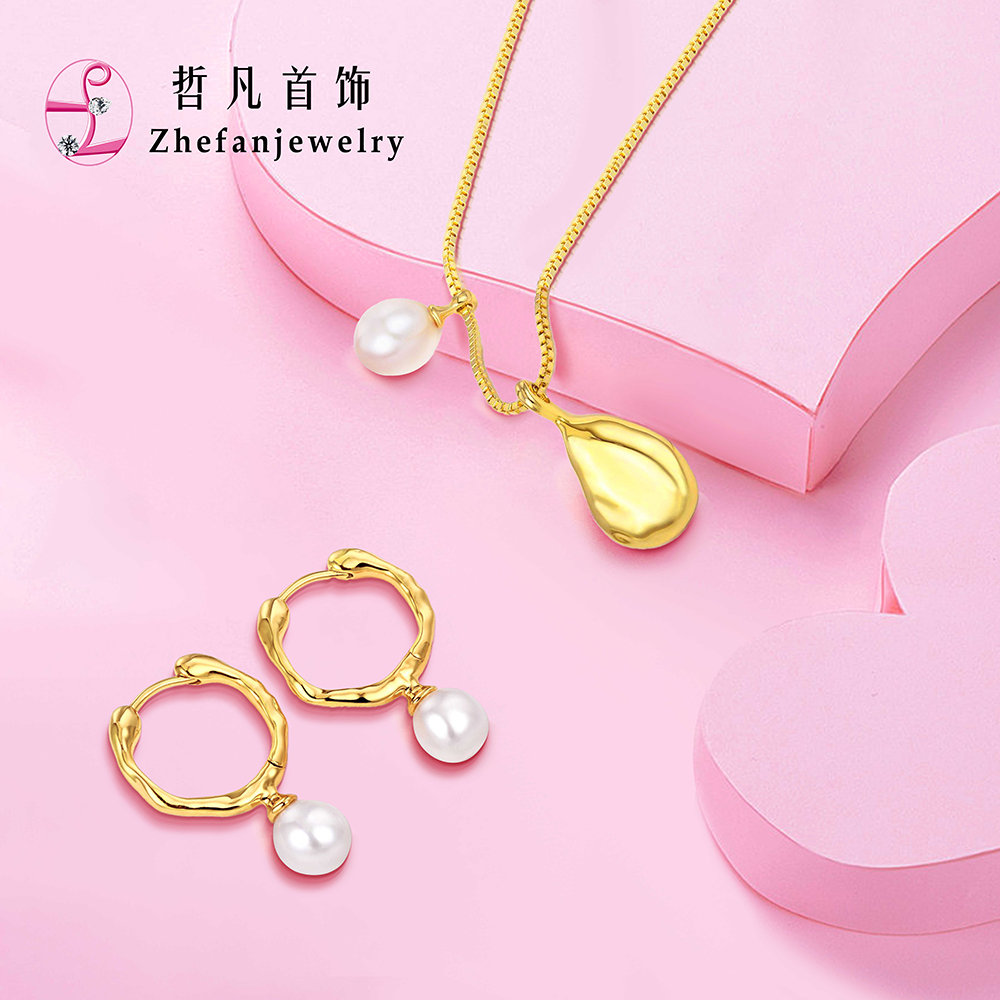Email cannot be empty
Password cannot be empty
Email format error
Email cannot be empty
Email already exists
6-20 characters(letters plus numbers only)
The password is inconsistent
Email format error
Email cannot be empty
Email does not exist
6-20 characters(letters plus numbers only)
The password is inconsistent


Jewelry is a treasure in the eyes of many people, and traditional craftsmanship, fine design and material selection are key factors in the production of high-quality jewelry. As one of the main materials of jewelry, the choice of metal has a great impact on the texture and appearance of jewelry. Whether it is for jewelry lovers, jewelry designers or jewelry entrepreneurs, the choice of metal directly affects the quality, appearance and market competitiveness of jewelry. Then, before choosing a suitable metal for making jewelry, we should understand the various metals on the market.
Gold is one of the oldest and most common jewelry metals, has a high gloss and oxidation resistance, and is often used in the manufacture of jewelry. The purity of gold is usually expressed in Karat (K), such as 24K for the purest metal. Common types of gold are 18K, 14K, etc., and different purities of gold have different hardness and color. Gold is an expensive metal with a high price. As the price of gold fluctuates, the price of gold jewelry will also fluctuate, which is not suitable for consumers with limited budgets. In general, making jewelry gold has the characteristics of being precious and valuable, but there are also some shortcomings that need to be noted. When choosing gold jewelry, consumers need to make reasonable tradeoffs and choices according to their own preferences, budgets and maintenance awareness.
Platinum is more wear-resistant and rarer than gold, with a silver-white appearance and a high degree of corrosion resistance. Due to its rarity and high price, platinum is often used in the production of high-end jewelry, such as wedding rings. In general, the production of jewelry platinum has the advantages of noble, durable, not easy to oxidation and fading, but the shortcomings of expensive, difficult to process, and large weight also need to be considered. Consumers can choose their own platinum jewelry according to their personal preferences, budgets and needs, weighing the pros and cons.

925 silver is the most common purity standard, meaning it contains 92.5% pure silver and has good strength and durability for making jewelry. Compared with metals such as iron, steel, etc., silver jewelry is less prone to rust and is relatively easy to maintain. Just wipe it regularly to keep the luster of your jewelry.
1.Noble and elegant: 925 silver is a noble precious metal, with good luster and texture, suitable for the production of high-grade, elegant jewelry.
2. Strong oxidation resistance: 925 silver contains 92.5% pure silver, and the rest is other metals, which makes 925 silver have excellent antioxidant properties and is not easy to be oxidized to black.
3. Easy processing: 925 silver is stronger than sterling silver, easier to carry out a variety of processing and engraving, can produce more exquisite, detailed jewelry styles.
4. Good biocompatibility: Under normal circumstances, 925 silver will cause skin allergic reactions, suitable for sensitive skin people wear.
5. High value preservation: 925 silver is a precious metal, the price is relatively stable and there is a certain appreciation space, the purchase of 925 silver jewelry can be used as an investment.
1. Easy to scratch: 925 silver is soft and relatively susceptible to scratches and wear, requiring daily maintenance and careful use.
2. Regular cleaning: 925 silver is susceptible to oxidation and darkening, and requires regular use of silver cloth or special silver jewelry cleaner for cleaning and maintenance.
3. Not suitable for soaking: 925 silver jewelry can not be soaked in water for a long time, otherwise it will accelerate oxidation and affect the luster.
4. May cause allergies: Some people may have an allergic reaction to other metal components in 925 silver, which needs attention when using.
5. Relatively expensive: Compared with other materials, 925 silver belongs to high-end jewelry, the price is more expensive, not suitable for all consumers.
Consumers who are willing to spend energy on maintenance know how to appreciate the unique luster and texture of 925 silver.
People who have the sense of investment and are willing to buy precious metal jewelry as a long-term hedge.
Have special preferences and needs for precious metals, and pursue high-grade and exquisite jewelry styles.
Titanium metal has the characteristics of light weight, corrosion resistance and oxidation resistance, so it has become a rapidly rising jewelry material. Titanium metal in a variety of colors, gray, black, etc., suitable for modern style design.

Stainless steel jewelry is a decoration made of stainless steel as a raw material, usually with durable, anti-oxidation and fashion characteristics. Stainless steel is a kind of corrosion-resistant, not easy to discolor and easy to clean material, so stainless steel jewelry has been more and more favored by consumers in recent years.
1. Strong durability: Stainless steel has high hardness and wear resistance, and is not susceptible to daily wear and scratches, so stainless steel jewelry is more durable and suitable for long-term wear.
2. Anti-oxidation and anti-corrosion: Stainless steel has anti-oxidation and anti-corrosion properties, which is not easy to be affected by air, water and other external environment and discoloration, and maintain the luster.
3. Easy to clean: Stainless steel is not easy to accumulate dirt, simple and convenient to clean, just rinse with water or gently wipe to keep bright.
4. High biocompatibility: stainless steel has low irritation to the skin, is not easy to cause allergic reactions, and is suitable for people with sensitive skin.
5. Appearance fashion: stainless steel jewelry appearance design is diverse, can carry out a variety of decorative processing such as polishing, painting, gold plating, etc., fashion sense is strong, suitable for fashion people.
Cold feeling: stainless steel hardness is higher, the cold feeling is more obvious, may not be as warm as other materials.
Difficult to adjust the size: The hardness of stainless steel is high, and it is difficult to adjust the size and shape during the production process, which needs to be taken into account.
Scratches are more obvious: Although stainless steel has high hardness, it is also prone to scratches or damage when it is paired with materials with higher hardness or in contact with sharp objects.
In general, stainless steel jewelry has many advantages, especially its durability and antioxidant properties, so that it can remain bright and beautiful for a long time, attracting more and more consumers to choose stainless steel jewelry as a daily match.
Copper metal is widely used in jewelry because of its good ductility, electrical conductivity and corrosion resistance, as well as its relatively low cost. There are many kinds of copper jewelry, including but not limited to bracelets, necklaces, earrings, etc., which are loved by consumers for their unique charm and practicality. Copper jewelry production materials mainly include bronze, brass and red copper, each material has its own unique texture and appearance characteristics, suitable for different designs and uses.
1. bronze jewelry: Bronze is an alloy of copper and tin. For its unique texture and historical value, it is often used to make jewelry in a retro style. The surface of bronze jewelry may form copper rust, which is mainly copper sulfate, copper oxide, etc., showing a gray green or emerald green, adding a simple beauty to the jewelry.
2. brass jewelry : Brass contains a small amount of tin, has good corrosion resistance, bright color, similar to gold. Brass jewelry can be polished or made into matte, widely used in doorknobs, lamps, railings and other architectural components, but also suitable as stylish and gorgeous modern jewelry.
3. red copper jewelry: red copper is relatively pure copper, has good ductility, high melting point but easy to process into a variety of patterns. Red copper jewelry with its dark red metallic luster, not only expresses the modern sense and has a calm, noble quality, is the most commonly used materials in copper jewelry.
In the process of making copper jewelry, handwork still occupies an important position. Start from the selection of raw materials, according to the design requirements of processing, including tapping, hot processing, grinding, polishing and other steps, and finally make a variety of shapes and designs of jewelry. In addition, the copper gold jewelry that has appeared in recent years, by electroplating 24K gold on the brass surface, not only has a low cost, but also can maintain the luster and brightness of gold for a long time, which is loved by consumers.
1. Simple and elegant: Copper jewelry has a unique texture and classical style, suitable for showing personality and unique taste.
2. Oxidation resistance: Copper has good corrosion resistance, can maintain luster for a long time, and is not easy to rust and discolor.
3. Easy to process: Copper is a soft metal that is easy to process and carve into various shapes and patterns to make complex and exquisite jewelry.
4. Moderate price: Compared with precious metals, the price of copper is more affordable and suitable for mass consumers.
5. Good for the body: Studies have shown that properly wearing copper products can improve blood circulation, relieve joint pain and so on.
1. Easy to produce oxide layer: Wearing copper jewelry for a long time may produce oxide layer on the surface, resulting in darkening of color, requiring regular cleaning and maintenance.
2. Skin allergy: Some people may have an allergic reaction to copper, causing skin discomfort or itching.
3. Easy to leave marks: Copper jewelry may leave pigmentation on the skin after contact with the skin, affecting the appearance.
4. Large relative weight: Copper is relatively heavy compared to other lightweight materials, and it may feel uncomfortable when worn for a long time.
Although copper jewelry has certain disadvantages, its unique style and texture attract many consumers. Understanding the characteristics and maintenance skills of copper jewelry can better enjoy the charm and joy brought by copper jewelry. In general, copper metal has become one of the preferred materials for making jewelry because of its unique physical properties and relatively low cost. Whether it is traditional bronze jewelry, or modern style brass and copper jewelry, with their respective beauty and practicality, in the market place.
1. Metal hardness: Consider the hardness and wear resistance of the metal, choose metal materials that can withstand the test of time and durable use.
2. Oxidation: The oxidation properties of metal materials need to be considered to avoid the choice of metal products that are easy to oxidize to cause discoloration or tarnish.
3. Modeling needs: Select the appropriate metal materials according to the modeling and style needs of jewelry design to show the beauty and style of the design.
4. Skin sensitivity: Consider the wearer's skin sensitivity, choose skin-friendly metal materials to avoid causing allergic or uncomfortable reactions.
5. Cost and budget: Considering the choice of metal materials according to the budget, the cost of different metals varies greatly, so choose metal materials that meet the budget and can meet the design needs.
6. Environmental protection and sustainability: Consider the environmental protection and sustainability of metal materials, select metal materials that meet environmental standards and ethical requirements for jewelry production.
Preferred choice of recycled metals, such as recycling gold, platinum, silver, etc. These metals can be recycled to reduce the mining of mineral resources and reduce the environmental impact, which is an environmentally friendly and sustainable option.
Preference is given to renewable metal materials, such as renewable brass, renewable silver, etc. These metal materials are derived from recycled resources and renewable energy sources, helping to reduce the consumption of natural resources.
Select metal materials with low environmental impact in the production process, such as copper, silver, titanium, etc. These metals have low energy consumption and emissions and have relatively little impact on the environment.
To sum up, choosing environmentally friendly and sustainable jewelry metal materials can adopt strategies such as recycling, prioritizing renewable metals, low environmental impact metals, non-hazardous materials, supporting social responsibility and promoting awareness, and working together to contribute to the sustainable development of the jewelry industry.
In jewelry production, some metal materials are not suitable as materials for jewelry production due to their characteristics or environmental effects. Here are some metal materials that are not recommended for jewelry making:
Including lead, cadmium, mercury and other heavy metal materials, these metals are harmful to the human body and the environment, can cause health problems and environmental pollution, so it is not suitable for making jewelry.
Nickel is a common allergen, and many people are allergic to nickel, which can cause skin irritation and other allergic reactions. Therefore, it is not recommended to use metal materials containing a high proportion of nickel to make jewelry.
Some metals such as iron, aluminum, zinc, etc., are easy to oxidize, which can cause jewelry to lose luster or produce rust, affecting beauty and durability, so it is not recommended for making high-end jewelry.
Although the price of cast iron is low, but the hardness is low, easy to deformation, easy to rust and other problems, is not suitable for making jewelry products.
Some alloys contain more color elements, easy to cause skin allergies or uncomfortable reactions, so it is not recommended to use these nonferrous metal alloys in jewelry production.
To sum up, it is not recommended to use toxic metals, metals containing nickel, easily oxidized metals, low-quality cast iron and non-ferrous metal alloys in jewelry production to ensure the quality, safety and environmental protection of jewelry products.
In general, choosing the right metal to make jewelry is a key step in making high-quality jewelry, which needs to consider factors such as durability, cost and aesthetics. According to different types of jewelry design and consumer preferences, choosing the right metal can enhance the quality and appeal of the product. It is recommended to make more comparisons and considerations when choosing metals according to readers' preferences and budget constraints to ensure that a satisfactory jewelry piece is produced.
After reading the above article, I believe that you have the answer to choose what kind of metal to make your jewelry. Finding the right supplier is also crucial. If you are just starting your jewelry business and are still looking for a supplier or want to change suppliers because of the quality, price or delivery time of long-term cooperation with suppliers, you can choose to cooperate with Zhefan Jewelry (established in 1997 jewelry factory), we support free samples and personalized customization.Contact us to learn more about our expertise in the jewellery industry.